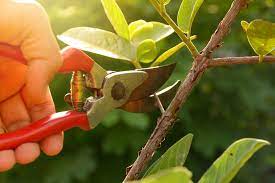How to Prune your Knock Out and Drift Roses
How to Prune your Knock Out and Drift Roses
Roses can be intimidating for many gardeners. After all, roses, in their seemingly infinite variety, attract the most ardent flowering plant enthusiasts, bolstered by an enormous body of literature full of detailed advice about how to best grow and care for these ancient and treasured blooms.
The truth, though, is that roses are tough customers that can stand up to a good pruning and even tolerate mistakes more readily than many other plants. There are several types of roses to choose from, each blooming slightly differently:
- Floribunda – bloom best on new wood
- Grandiflora – only bloom on new wood
- Hybrid Tea – only bloom on new wood
- Modern Shrub Rose – repeat bloomers through the growing season
- Climbers – can be repeat bloomers (not all)
- Ramblers – only bloom once a year
Why bother pruning?
Because pruning is vital for plant health. Pruning helps protect against diseases and encourages continued blooming for the types of roses that will repeatedly set buds. Of course, pruning also helps shape the plant and opens up the interior of it to promote healthier, more productive growth. Improving air circulation through the center of the plant helps dry the leaves which prevents foliar diseases; good circulation also prevents fungal diseases such as black spot and mildews, which are more common on plants with congested growth in the middle.
There are four main types of pruning:
Spring Structural Pruning – Ideally done to shape the plant once the threat of frost is past, spring pruning removes deadwood and any damaged or crossing wood that wasn’t managed in the fall or that died back over the winter. In New England, we like to say prune when the forsythia are in full bloom, but watch the weather anyway, just in case there’s a cold snap forecast. Better a late pruning than too early and suffer unnecessary dieback.
Summer Pruning – cut lower than at the first leaflet to manage growth and shape. This is especially useful for aggressive growers like climbers and some shrub roses. Both deadheading and shaping can be done from June through September.
Deadheading – Good for all roses – single bloomers and multi-bloom plants. For single bloomers, if you would like, you can leave the finished blossoms to encourage the rose hips for interesting fall color and texture. When deadheading, make the cut at the 1st set of leaves that have five leaflets on the stem. Normally this is the second or third set down the stem.
Shoot pruning – coming from above the graft is a good thing – cut it down to fit in with the rest of the rose shape. If the shoot is coming from below the graft or bud-union, then you want to fully remove this growth because it’s most likely coming from the rootstock which is not the hybrid you purchased.
CREDIT : https://www.thegardencontinuum.com/blog/how-to-prune-your-knock-out-and-drift-roses
ABOUT US :
As a Small Business Enterprise and Small Local Business Enterprise business, we can help you get that advantage on those bids that encourage SBE & ELBE participation as well as being a qualified contractor for your landscape construction needs.
TAGS :
commerciallandscaping maintenancecommercial landscaping maintenance Vista CA,commercial landscaping maintenance San Marcos CA,commercial landscaping maintenance Carlsbad CAlandscaping for commercial propertieslandscaping for commercial properties Vista CA,landscaping for commercial properties San Marcos CA,landscaping for commercial properties, Carlsbad




Comments
Post a Comment